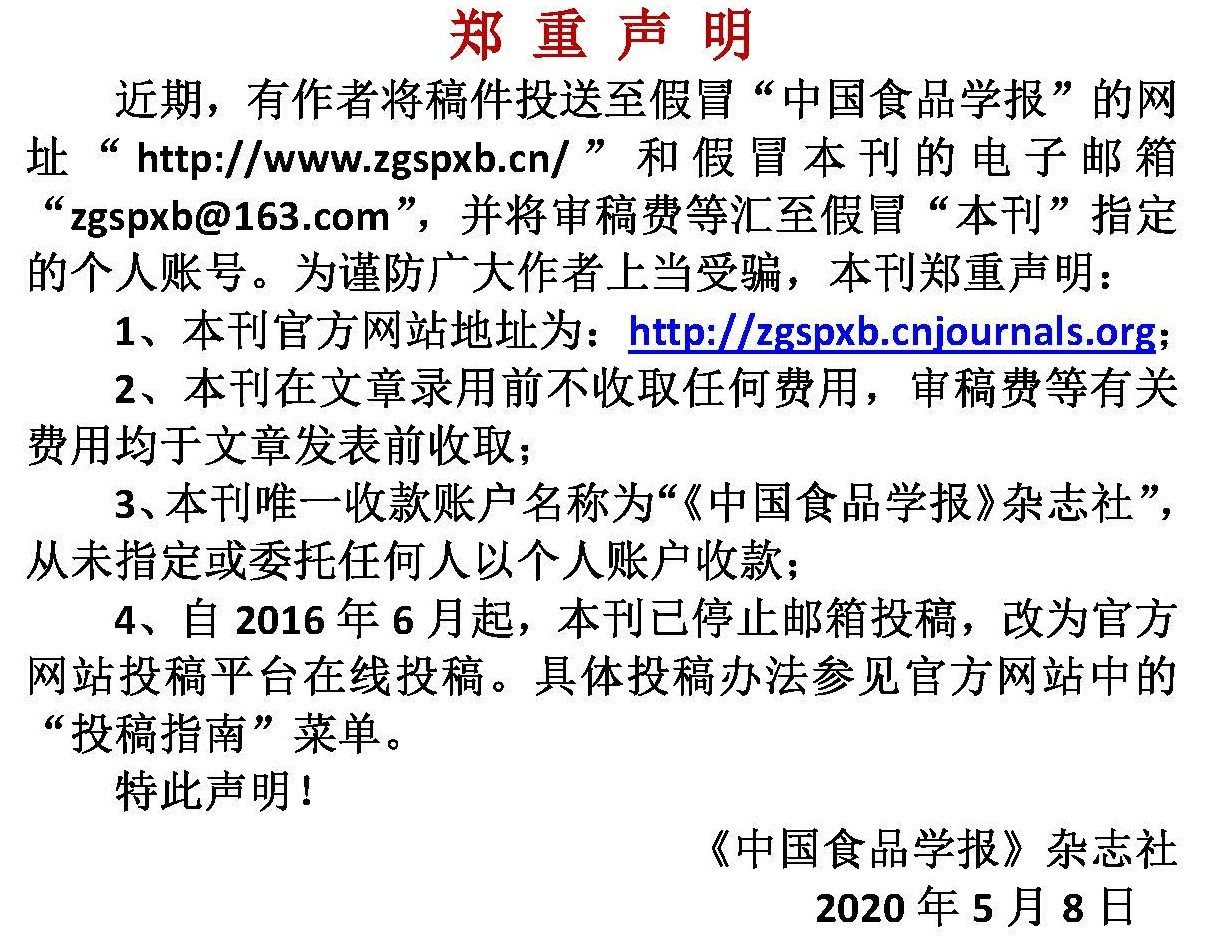低温等离子体对杨梅采后致病菌——桔青霉的抑制作用
作者:
作者单位:
(浙江大学农业与生物技术学院 果实品质生物学实验室 园艺产品冷链物流工艺与装备国家地方联合工程实验室浙江省园艺植物整合生物学研究与应用重点实验室 杭州 310058)
作者简介:
张禾(1997—),女,硕士生
通讯作者:
中图分类号:
基金项目:
国家重点研发计划项目(2017YFD0401303);浙江省“三农六方”科技协作计划项目(2021 SNLF0)
Inhibitory Effect of Cold Plasma on the Postharvest Pathogen Penicillium citrinum of Chinese Bayberry
Author:
Affiliation:
(Laboratory of Fruit Quality Biology, Horticultural Products Cold Chain Logistics Technology and Equipment National-Local Joint Engineering Laboratory, Zhejiang Provincial Key Laboratory of Integrative Biology of Horticultural Plants, College of Agriculture & Biotechnology, Zhejiang University, Hangzhou 310058)
Fund Project:
引用本文
张禾,陈烨芝,孙翠,曹锦萍,孙崇德.低温等离子体对杨梅采后致病菌——桔青霉的抑制作用[J].中国食品学报,2022,22(7):183-192
复制分享
文章指标
- 点击次数:
- 下载次数:
- HTML阅读次数:
历史
- 收稿日期:2021-07-22
- 最后修改日期:
- 录用日期:
- 在线发布日期: 2022-08-19
- 出版日期:
文章二维码

版权所有 :《中国食品学报》杂志社 京ICP备09084417号-4
地址 :北京市海淀区阜成路北三街8号9层 邮政编码 :100048
电话 :010-65223596 65265375 电子邮箱 :chinaspxb@vip.163.com
技术支持:北京勤云科技发展有限公司
地址 :北京市海淀区阜成路北三街8号9层 邮政编码 :100048
电话 :010-65223596 65265375 电子邮箱 :chinaspxb@vip.163.com
技术支持:北京勤云科技发展有限公司
